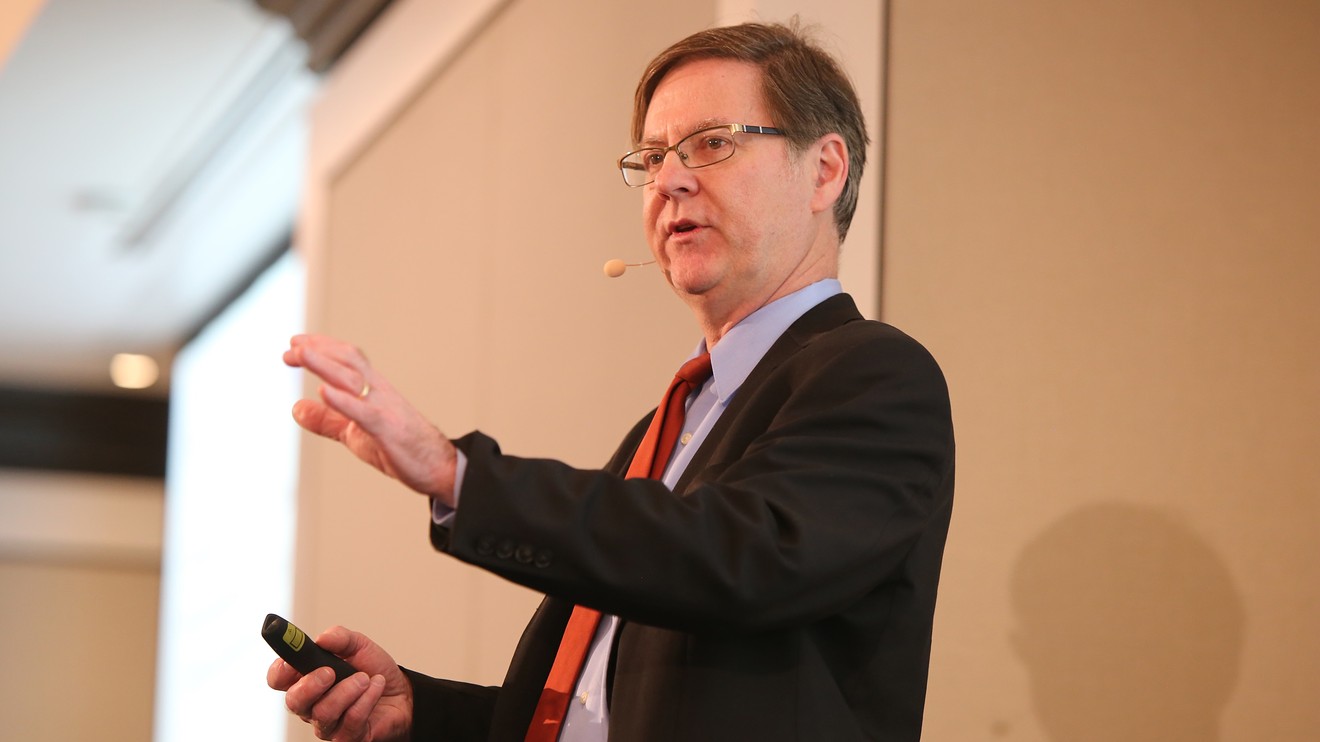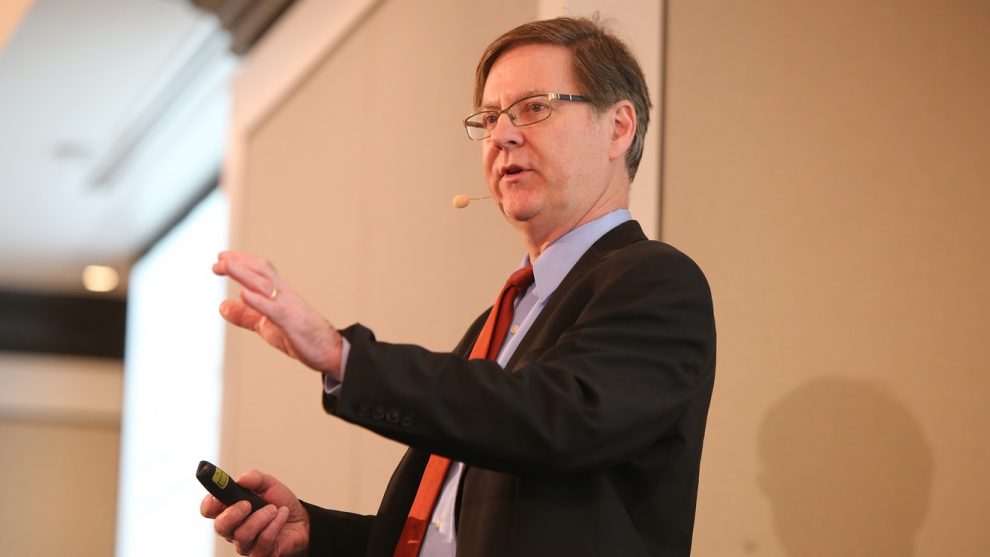
Last summer, when the U.S. had just notched a decade of economic recovery and unemployment stood at 3.7%, Campbell Harvey, a professor of finance at the Fuqua School of Business at Duke University, predicted a recession for 2020 or early 2021.
Why? Because the yield on the three-month Treasury bill was higher than the yield on the five-year Treasury note for the entire second quarter of 2019. That “inverted yield curve” had been the harbinger of the previous seven recessions. Harvey first identified the inverted yield curve’s predictive power in his 1986 doctoral dissertation at the University of Chicago.
“ ‘It’s a biological event, and the solution is also clear: another biological event.’ ”
So, here we are in what could be the deepest recession since the Great Depression, triggered by a global pandemic and governments’ unprecedented actions to prevent its spread. What does Harvey expect for the U.S. economy now? He sees this recession hitting deep but being short — with the economy in recovery mode by the end of this year.
“In the global financial crisis [in 2008-09], we never could tell when it was going to end,” he said in a telephone interview. This time, he said, “the cause is clear — it’s a biological event, and the solution is also clear: another biological event.”
He doesn’t anticipate the V-shaped recovery that Wall Street touted a few weeks ago. “I think it’s more what I call the ‘skinny U,’ because I do believe that we will have a vaccine by the first quarter [of 2021],” he said.
That’s certainly more optimistic than the projections of experts like Dr. Anthony Fauci. But the strong recovery of the Dow Jones industrial Average DJIA, +0.56% and S&P 500 SPX, +0.90% from their March lows suggests forward-looking investors are factoring this in, too.
“ ‘We were headed towards a mild, short recession. Then the COVID-19 pandemic struck and changed everything.’ ”
Harvey’s recession call was more pessimistic than most forecasters at the time, who saw no recession for this year, either. Would the recession have happened without the pandemic?
“We’ll never know the counterfactual,” he said. “The inversion was moderate, so I think that we were headed towards a mild, short recession. Then the COVID-19 pandemic struck and changed everything.”
Indeed. Harvey considers the novel coronavirus an accelerant of underlying trends resulting in this recession, which he thinks began in the first quarter of 2020. We’re going through the worst of it right now. “Think of the second quarter as the worst quarter of [GDP] growth that the U.S. has ever experienced, historically,” he said. “It could be 30% negative on an annualized basis. The third quarter, it’s hard to imagine getting worse than where we are.”
Harvey adds that he can see some green shoots just in time for winter, as coronavirus treatments emerge and the world gets closer to testing and deploying a vaccine. “A vaccine is the solution in terms of reducing all of the uncertainty. A vaccine means ‘all clear,’” he said. ”If we’ve got some pharmacological solution that reduces the risk of death, that’s also incredibly helpful.”
Neither Harvey nor I are experts on vaccines, so I’ll stay neutral on this, but he has done some research and thinks a vaccine could be available sooner than most expect. Pfizer PFE, +2.36% is one of several pharmaceutical and biotech companies testing vaccines on an accelerated basis. Harvey is particularly hopeful about a vaccine being developed at the University of Oxford, in partnership with AstraZeneca AZN, +2.13% , which just started Phase I trials in the U.K. If those go well, said Harvey, it could be distributed throughout the U.K. later this year.
“The point is that you can see a credible scenario for the end of this,” he said. “Even if it’s a partial deployment, even if people just understand, OK, we’ve got the vaccine, that’s going to change behavior. The psychology of this is pretty important.”
For investors, psychology is everything. Harvey won’t say the stock market has hit bottom; he thinks there could be more selloffs if there are setbacks to vaccine development or if the economic damage is bigger than expected. But he’s optimistic about the economy getting beyond what may well be a brief but brutal recession, largely because his favorite indicator — the yield curve — is positive now (with more than a little help from the Federal Reserve). “It’s a leading indicator, and it’s saying that we’re coming out of recession,” Harvey said. Let’s hope he’s as right about the recovery as he has been about recessions.
Howard R. Gold is a MarketWatch columnist. Follow him on Twitter @howardrgold.






